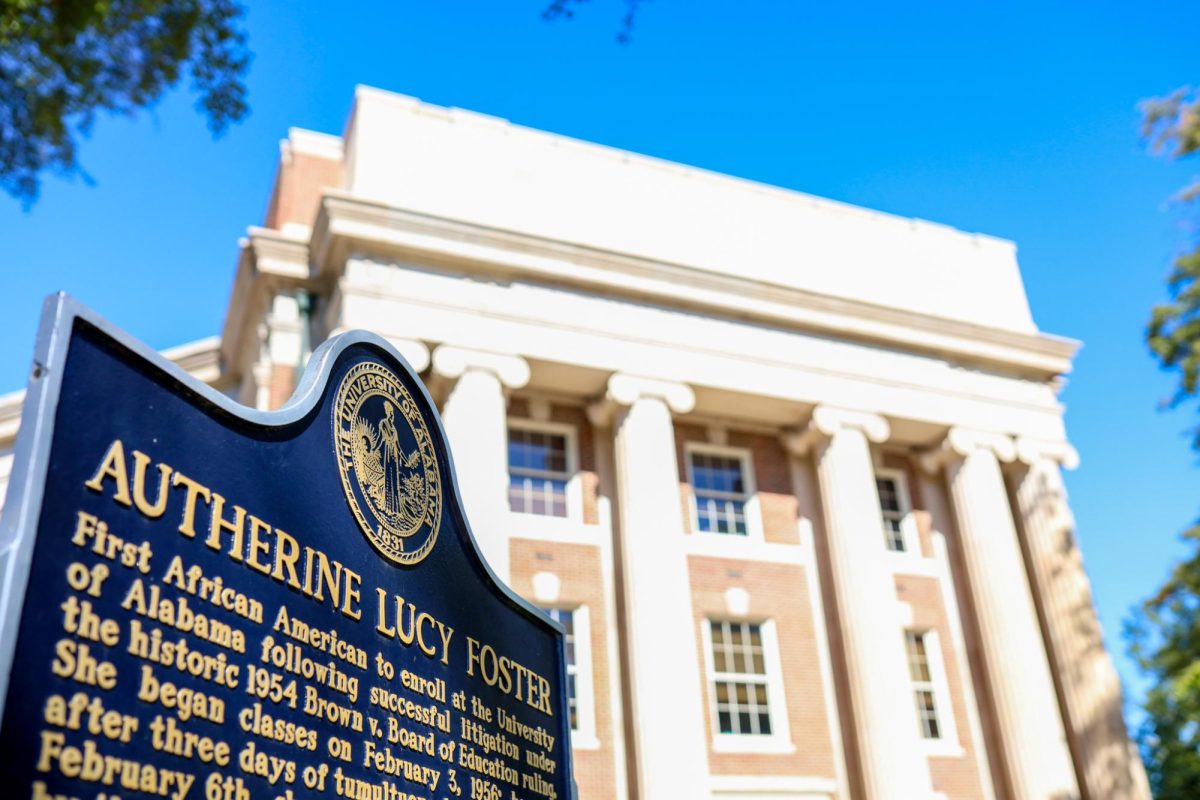A drop of water hoping to end up in the city of Tuscaloosa’s drinking water is first born – or reborn – in a cloud. There, it condenses and precipitates, falling as a droplet to the earth. If it avoids being trapped in the soil as groundwater, the droplet makes its way towards its first stop: Lake Tuscaloosa. This begins the process that provides University of Alabama students and Tuscaloosa residents their daily water supply.
Mary Wallace Pitts, geography instructor and director of Undergraduate Studies, specializes in watershed programs and water resources research. She said the overland journey water takes to its reservoir has a significant impact on its initial quality.
“One thing that people need to understand is that water management as a resource is based on land use, land management because everything’s that done on the land affects the quality of the water,” she said. “What’s happening in terms of land use in your watershed is the most significant thing when you start looking at water quality.”
Droplets that end up in Lake Tuscaloosa are likely to travel through forested areas, which are ideal. Pitts said the natural quality and potential quantity of water in Lake Tuscaloosa is high and required treatment is minimal.
“That’s why Tuscaloosa thrives economically – because we have a good quality water source that’s kind of guaranteed,” she said. “Tuscaloosa’s pretty unique from that perspective.”
(See also “Waterfest focuses on cleaning up Tuscaloosa’s main water source“)
Now incorporated into Lake Tuscaloosa, the droplet is part of a 40 billion gallon reservoir. That raw water leaves the lake through treatment plants and encounters a series of membranes, chemicals and chambers that remove contaminants and ensure quality.
Here, the droplet has options. Before 2008, the only option would have been the Ed Love Water Treatment Plant near the intersection of Jack Warner Parkway and Helen Keller Boulevard, but a drought prompted the opening of the Jerry Plott Water Treatment Plant by the Lake Tuscaloosa dam.
Jimmy Junkin, director of the City of Tuscaloosa Water and Sewer Department, said Lake Tuscaloosa was never in danger of running dry, but the drought pushed the Ed Love site to its output limit.
“With that, we’re many years from ever getting into a situation where we’re running close to the edge again,” he said. “We have ample capacity to deal with any demand, even during a severe drought summer, right now.”
The new site uses more reliable, efficient and effective membrane technology to treat the water, he said. As seasons change, natural and mostly harmless chemicals shift and accumulate in the lake. And given that Lake Tuscaloosa is also recreational, activities can add man-made ingredients to the natural supply.
However, the sheer size of the lake and the constant monitoring make Junkin confident that a drop in water quality or quantity is not a threat.
“We’re always aware of activities in and around our lakes,” he said. “The capabilities of the plant have never been stretched to their max. We can do much more than we currently do if we had to.”
After a chaotic and chemical trip through the treatment plant, the droplet comes to rest in a storage tank where it waits for the call of a faucet turning on. Once summoned, it begins its journey through a series of shrinking pipes until it reaches a neighborhood. Eventually the water will re-enter the system via plumbing or natural systems.
Pauline Johnson, professor of civil, construction and environmental engineering, said sewage, which returns in a series of increasingly larger pipes, is treated and inspected for quality before discharge. After discharge, the droplet may be called up again to a cloud or drafted into service as drinking water farther upstream.
“One man’s wastewater is the next person’s drinking water,” she said. “We’re drinking the same water that the dinosaurs drank, and it’s being continuously refreshed through the hydrologic cycle.”
(See also “Two Alabama students win competition with water tower apartment design“)
Lake Tuscaloosa was created by damming North River upstream of where it dumps into the Black Warrior River, so becoming wastewater is the droplet’s only way of reaching the 6000-plus square-mile river system, which serves 17 counties.
William Andreen, UA professor of law, said discharge from a surface mine at Shepherd Bend Mine near Birmingham would be in close proximity to a drinking water intake. Pollution potential aside, he said, the treatments and costs associated with the water will increase.
“That’s rather unprecedented,” he said. “I think it’s a real problem.”
Coal ash impoundments – combustion byproduct stored in unlined ponds along the river – are loosely regulated, if at all. Andreen said coal ash is currently being studied and reviewed by the EPA, which may decide to impose federal regulations. In the meantime, states have leeway in how strong their regulations are.
Cindy Lowry, executive director of Alabama Rivers Alliance, said current requirements are not strong enough to protect drinking water sources. Lowry and ARA have been pushing for strong permits surrounding coal ash regulation, as well as a comprehensive water management plan for protecting and sustaining the state’s water resources.
“Ideally, you would want to prevent it rather than have to respond to it,” she said.
In April 2012, Gov. Robert Bentley created the Alabama Water Agencies Working Group, a group of state agencies that in August 2012 released a report detailing findings and recommendations concerning water resources and a management plan for the state.
A more formal water management plan would be a break from the current common law system, in which the state is not involved, under which Alabama operates. Water usage, especially in times of water shortage, has become especially contentious. Andreen said the lack of a water management plan could hurt Alabama if the 24-year-old tri-state water dispute over Alabama, Georgia and Florida’s usage of shared rivers and basins eventually rolls upstream to the Supreme Court.
“It’s not a really compelling argument if we don’t have a system that would itself help conserve and produce a sustainable river system,” he said.
The custody battle over the water in the Apalachicola-Chattahoochee-Flint River Basin is partially driven by environmental concerns. Recent droughts have been felt in the heart of booming Atlanta, a sign that the droplet’s courtroom appearances may be part of a bigger problem.
Glenn Tootle, associate professor of civil, construction and environmental engineering, said the South’s ability to use water for commerce and agriculture has only recently been threatened. Since consistent rainfall has traditionally kept the South’s greenery lush, Tootle said drought plans in the South are relatively undeveloped.
“We’ve had a lot of growth in the South,” he said. “All of a sudden now you’re experiencing challenges in water and [dealing with] the fact that we’re experiencing periods of drought.”
Now roaming the American Southeast, the droplet is far from home, having survived local pollution, territorial litigation and regional drought. On a sunny day, it might evaporate back into a cloud and drift around the world. Or, it might rain back onto Lake Tuscaloosa, a generous and clean water source, itself a man-made addition to the natural landscape.
In the four decades since its creation, Junkin said, the lake has become the community’s number one asset. Tuscaloosa and Northport use about 35 million gallons of water a day. Lake Tuscaloosa can produce 200 million gallons.
“You can get along without a lot of things and compensate for a lot of things, but you can’t compensate for a lack of raw water. And we got it,” he said. “We’re very blessed.”
(See also “NOAA constructing $23.5 million water center“)









